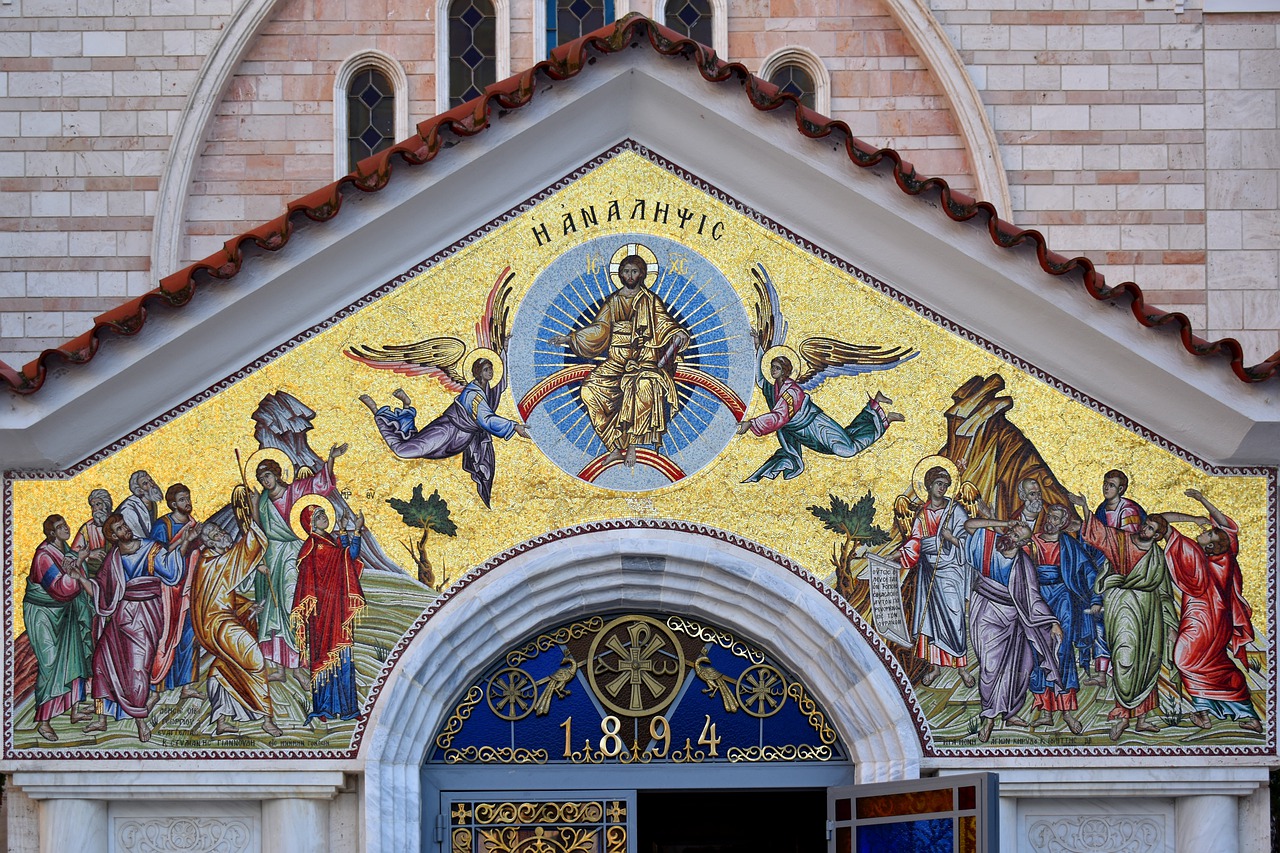The Roman Empire declined in the 4th century AD. At the same time Christianity was gaining strength. In 313, the Roman Emperor Constantine officially recognized the religion and adopted Christianity himself.
The emergence of Christianity had a strong influence on the arts. Artists were commissioned to decorate the walls of churches with frescoes and mosaics. They made panels in church chapels and illustrated and decorated church books. Under the influence of the Church, artists were to communicate the teachings of Christianity as clearly as possible.
Early Christians and Byzantine artists continued the technique of mosaics that they had learned about from the Greeks. Small flat pieces of colored glass or stone were set on wet cement or plaster. Sometimes other hard materials such as pieces of baked clay or shells were used. In Italian mosaics, the colors are especially deep and full. Italian artists made backgrounds with pieces of gilded glass. They depicted human figures in rich colors against a background of sparkling gold. The overall effect was flat, decorative and not realistic.
Byzantine mosaics were often even less realistic and even more decorative than the motifs of early Christians. “Byzantine” is the name given to the style of art that developed around the ancient city of Byzantium (now Istanbul, Turkey). The mosaic technique perfectly suited the Byzantine taste for magnificently decorated churches. The famous mosaics of Theodora and Justinian, made about A.D. 547, show a taste for wealth. The jewelry on the figures glistens and the colored court dresses sparkle against the glittering gold. Byzantine artists also used gold on frescoes and panels. Gold and other precious materials were used in the Middle Ages to separate spiritual objects from the everyday world.
